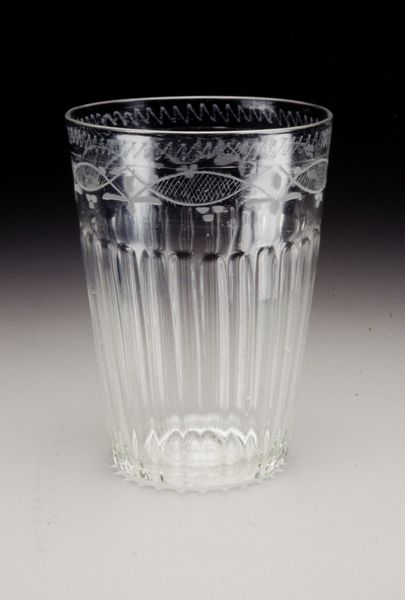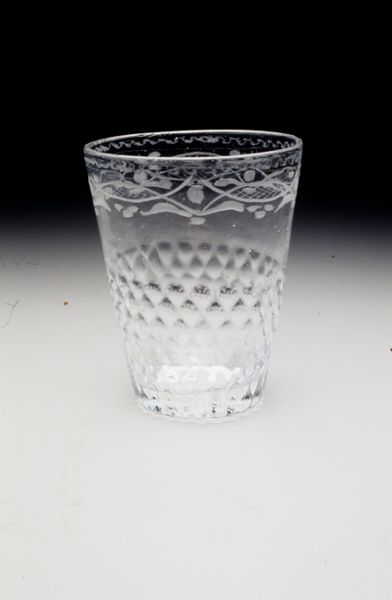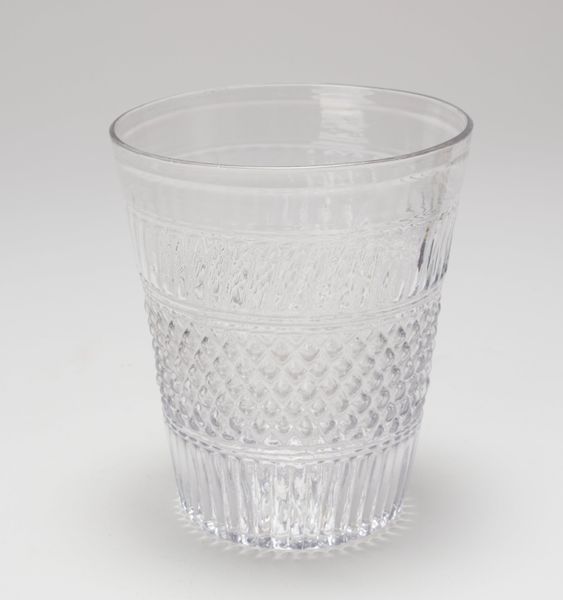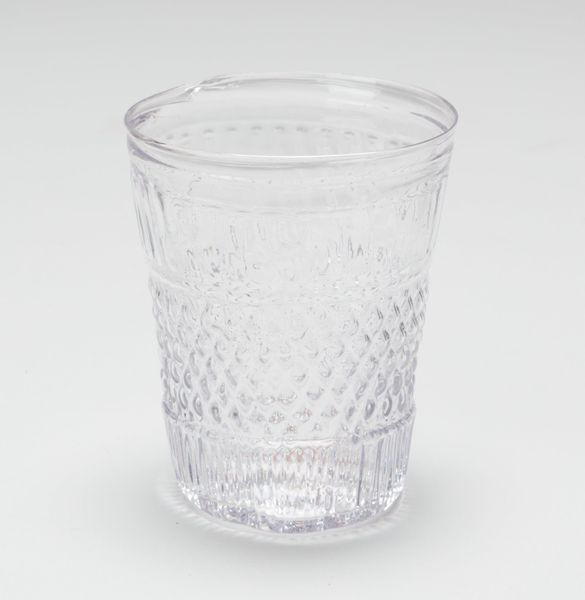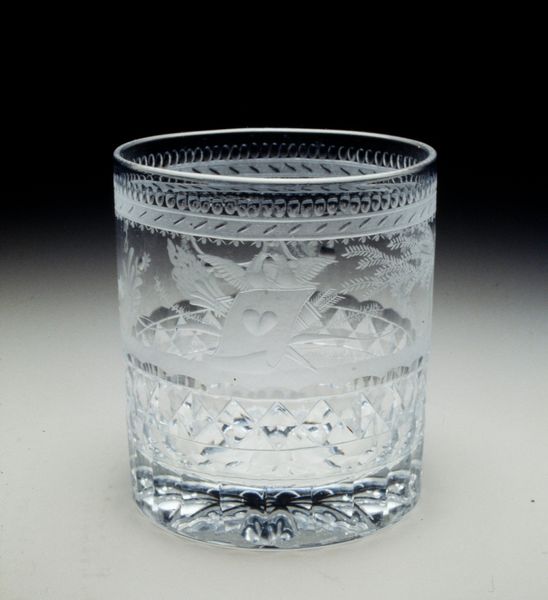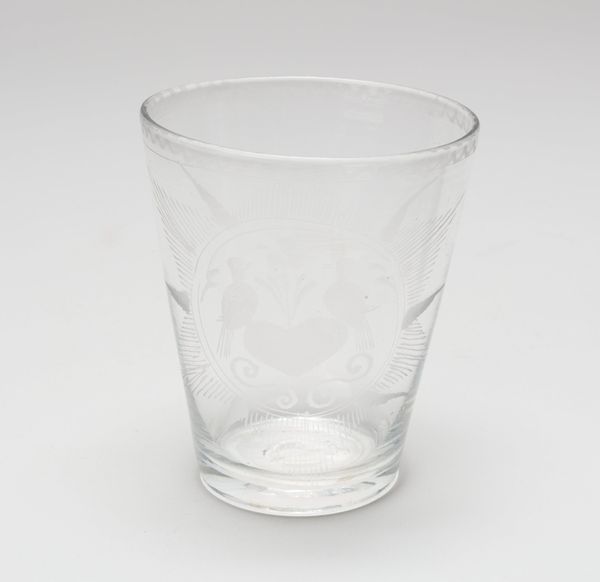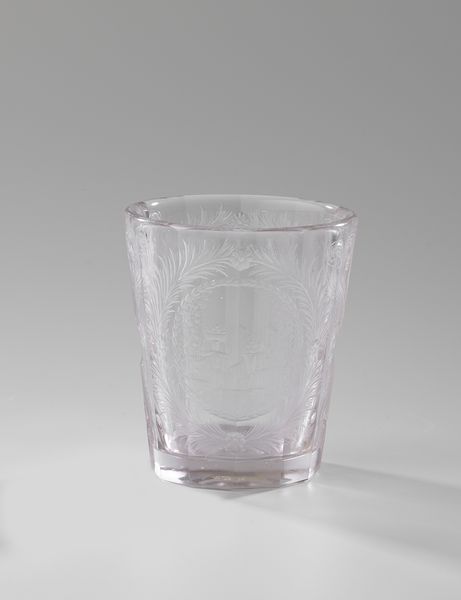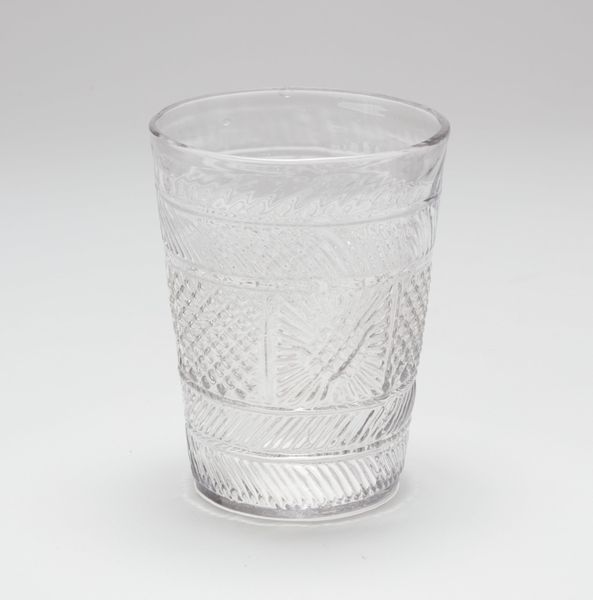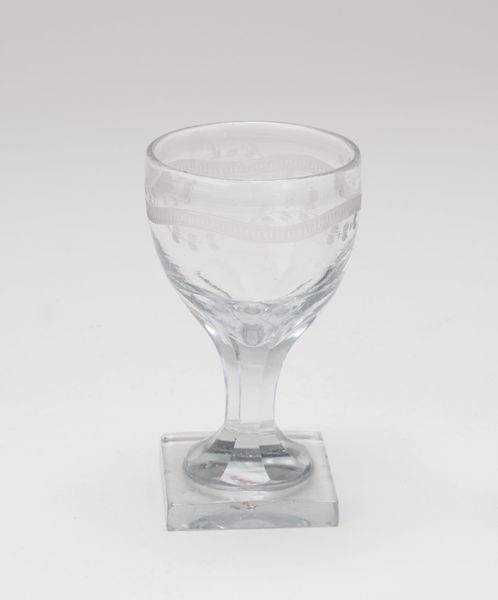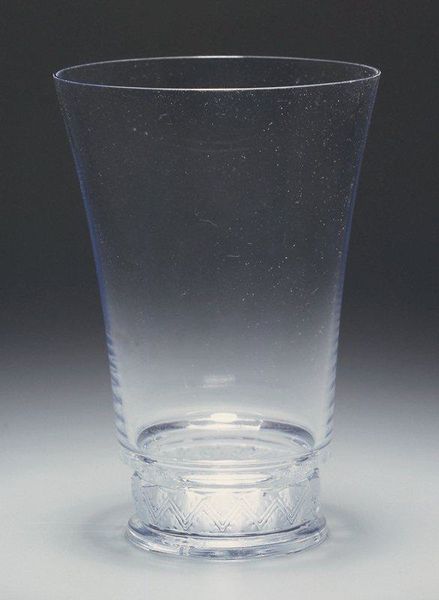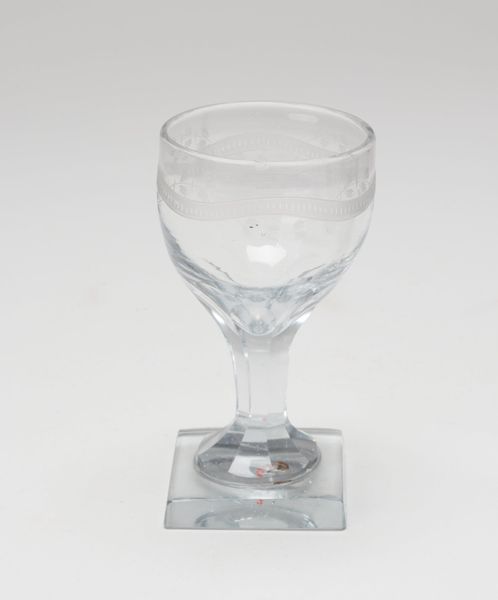
glass
#
glass
Dimensions: 6 1/2 x 4 7/8 in. (16.5 x 12.38 cm)
Copyright: Public Domain
Editor: Here we have an interesting "Flip Glass," made sometime between the 18th and 19th century, its authorship is unknown, and is made of glass. I'm immediately drawn to the symmetry in its design. What formal elements strike you most about this object? Curator: The glass's geometry presents a fascinating study in verticality versus circularity. Observe the cylindrical form contrasted by the horizontal registers that structure the glass. Note the subtle gradations in opacity within the glass itself. The repeated patterns introduce a structured rhythm. Consider how these various elements, planes, textures interact. How might one analyze the visual components to consider principles of unity? Editor: So you are considering how all those different parts add up. I hadn't really thought about the circularity contrasting with the vertical stripes; it does create a visual tension, right? What about the texture; do you think it's merely decorative, or does it have a deeper formal purpose? Curator: The texture serves more than a decorative role. Semiotically, consider it functioning as language itself. Its multifaceted surfaces interplay with light and shadow, complicating the otherwise simple form. The resulting refractive qualities activate the visual space surrounding it. Notice how the light transforms from one section to the next. Editor: That’s a good point. Now that you mention the use of light and shadow I see it everywhere, transforming the glass and its appearance. I'll definitely pay closer attention to how these components are operating next time. Curator: Precisely. Appreciating a glass's form and its effect is often about attentive observation and disciplined deconstruction of its components.
Comments
No comments
Be the first to comment and join the conversation on the ultimate creative platform.
